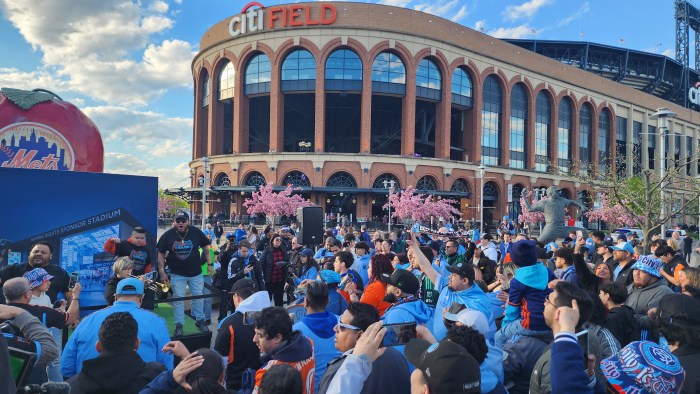Bottled water continues to surge as a product of choice among consumers seeking to quench their thirst. In 2001, U.S. consumers purchased 5 billion gallons according to the International Bottled Water Association — that’s about 17 gallons for ev
The sales growth of bottled water far outpaces that of any other bottled beverage and is now a $7 billion a year industry in the United States. Clearly, people want the convenience, quality and consistency that bottled water provides and are willing to pay for this premium product.
But what are consumers buying inside those plastic cylinders? And what are beverage producers and regulating bodies doing to help keep a safe, consistent product flowing to thirsty customers?
Some people believe that bottled water is nothing more than tap water with a cap on it. However, this is far from the truth as there are specific regulations that distinguish among different types of bottled water. Before buying bottled water, you should know what you’re paying for.
“Through efforts by the water treatment industry, bottled water companies have incorporated such technologies as reverse osmosis and ozone treatment into their processes,” said Craig Beckman, process water systems business manager for Osmonics, a Minneapolis company that has specialized in water treatment systems for industry and consumers for more than 30 years.
“These technologies ensure that consumers are getting a safe, high-quality product, and help water bottlers keep up with consumer demand and stringent regulations.”
Battling Bottles: The FDA Sorts It Out
Within the non-carbonated bottled water market there are two primary products: spring water and purified water. These two products account for the majority of the industry’s sales and consumption. Also included in this market are bottled artesian, drinking and mineral waters, but they only represent a small percentage of sales.
With so many types of water on the shelves, how do you know exactly what you are getting? Fortunately for American consumers, bottled water is a regulated food product. Local public health departments, along with the Food and Drug Administration, oversee the packaging and labeling of bottled water products in the United States. The FDA carefully regulates the statements that producers put on bottled water labels and prohibits deceptive or misleading labeling.
While the FDA does a good job of monitoring label content, the average consumer is generally unaware of what constitutes the water in that bottle. To help define bottled waters on the market, the FDA has definitions for the various water types:
Artesian water: Water from a well that taps a confined aquifer (a water-bearing underground layer of rock or sand) in which the water level is above the top of the aquifer.
Drinking water: Water that is sold for human consumption in sanitary containers and contains no added sweeteners or chemical additives. It must be calorie-free and sugar-free.
Mineral water: Water that has a level and constant proportion of minerals and trace elements that are naturally occurring from the source and cannot be added.
Purified water: Water that has been produced by distillation, deionization, reverse osmosis or other processes and that meets the definition of purified water in the United States Pharmacopoeia 23.
Spring Water: Water derived from an underground source that flows naturally to the surface of the earth. Generally, spring water goes through a treatment process such as filtration or ozonization (in which ozone is added to disinfect it) when bottled.
Close FDA Regulation
Beyond verifying that the contents match the label, the FDA’s Good Manufacturing Practices for general food products, including bottled water, govern plant and equipment design and construction, sanitary facilities and operations and production and process controls.
The FDA also sets quality standards for bottled water that regulate the allowable levels of substances in bottled water, such as coliform and lead. This regulation also sets the maximum acceptable levels for microbiological quality (viruses and protozoa), physical qualities, such as color and odor, chemical quality, such as the limits on organic and inorganic chemicals, and radiological quality, such as the limit on radium.
In addition to FDA guidelines, states may independently set their own regulations governing bottled water. Regulations vary, but generally, each state conducts specific inspections of bottled water sources and facilities to ensure that the source is safe and that the production line is putting out a safe product for consumers.
Members of the IBWA, which includes U.S. and international bottlers, distributors and suppliers, distribute 80 percent of the bottled water sold in the United States. The IBWA has set bottled water quality standards that are stricter than those of the FDA, including having a nationally recognized third-party organization make an annual, unannounced inspection of each IBWA member’s bottling plant.
While most consumers are not concerned about the details behind how bottled water is produced, they agree that it is safe and of excellent quality. According to a 2000 survey conducted for the IBWA, more than 70 percent of respondents believe that bottled water is a high-quality product.
Within four years, industry experts believe that bottled water will be second only to carbonated soft drinks as the beverage of choice among American consumers. If you’re among those making bottled water your beverage of choice, it’s in your best interest to know what’s inside that bottle — and be reassured about the processes that produced it.
– Courtesy of ARA Content
































